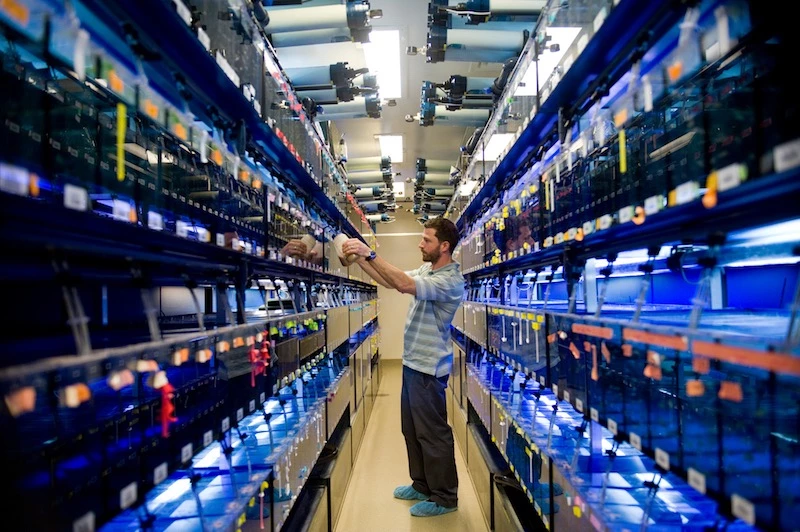Scientists investigating a root cause of leukemia have made a key discovery around how genetic mutations can cause blood stem cells to go rogue, forming dangerous populations of cloned cells that can go on to become cancerous. The team's experiments on zebrafish not only shed new light on how these cells protect themselves as they rapidly multiply, but reveal new targets for scientists looking to halt blood cancer in its early stages.
Conducted by scientists at the Boston Children's Hospital, the study focuses on what is known as clonal hematopoiesis. This is caused by genetic mutations and sees blood stem cells multiply at a disproportionate rate compared to other cells, quickly forming distinct populations of cloned cells that can then become dominant. Clonal hematopoiesis is a natural part of aging but is also associated with cardiovascular disease, solid tumors, and in rare cases can lead to diseases of the blood and in turn leukemia.
The authors of this new study set out to explore the idea that these rogue populations of cloned blood stem cells, which can come to comprise up to 30 percent of a person's blood cells, could be prevented from taking shape. Because children with blood disorders can develop clonal hematopoiesis early in life, such interventions could be key to preventing the onset of potentially fatal blood cancers.
“These children have a germline mutation that puts them at risk for developing leukemia earlier in life,” explains study author Serine Avagyan. “They can develop clonal hematopoiesis in adolescence and sometimes at a younger age. We think these predisposition syndromes fast-forward the process of clonal hematopoiesis, resulting in an early-onset leukemia.”
For their study, the scientists turned to the tried and trusted zebrafish, which often serves as a model for researchers as it features a remarkably similar genome to humans and their embryos happen to be transparent. In this case, that meant the scientists could watch developing blood cells in real time and see how different genetic mutations altered their activity.
“If you could understand how clones of blood stem cells become cancerous, you could specifically target the offending clone that’s causing the problem,” says study author Leonard Zon.

The blood stem cells of the zebrafish present in different colors, almost like a rainbow-themed barcode that shows off their diversity. The scientists used CRISPR to introduce genetic mutations found in human clonal hematopoiesis and then waited to see if any caused one type of stem cell to take over and form a rogue population of cloned cells.
“Serine was able to create mosaic mutations, such that some of the blood stem cells had the mutation and others didn’t,” says Zon. “We could then ‘compete’ the cells in the fish’s body to see which mutations caused a certain line of cells to take over.”
This process enabled the scientists to pinpoint which genetic mutations caused singular blood stem cell populations to become dominant. From there, they studied which genes different blood cells were turning on, which showed the mutated blood stem cells were switching on anti-inflammatory genes and producing anti-inflammatory molecules. This shielded them from inflammation and gave them a significant advantage over the other cells. The scientists then showed how knocking out one of the genes behind this protection, called nr4a1, saw the cloned cells forego this advantage.
“We’ve seen a lot of evidence that the bone marrow is really inflamed in patients with clonal hematopoiesis,” says Zon. “But this is one of the first studies to demonstrate that there are pathways in stem cells that make them resistant to the inflammation.”
The scientists hope to use these findings to develop therapies that reduce the risk of leukemia in people with clonal hematopoiesis. They will begin by pursuing development of a small-molecule drug that targets the nr4a1 gene or other anti-inflammatory mechanisms, and then work toward clinical trials.
The research was published in the journal Science.
Source: Boston Children's Hospital




